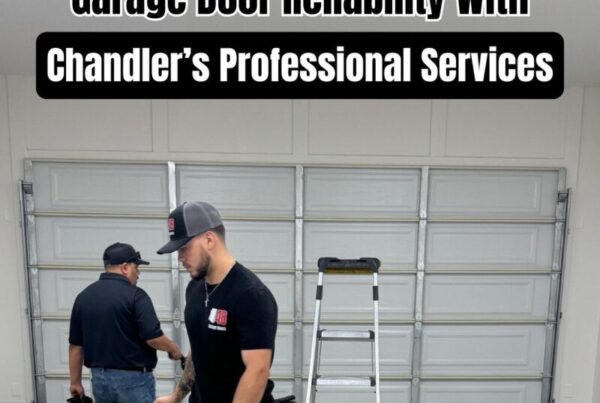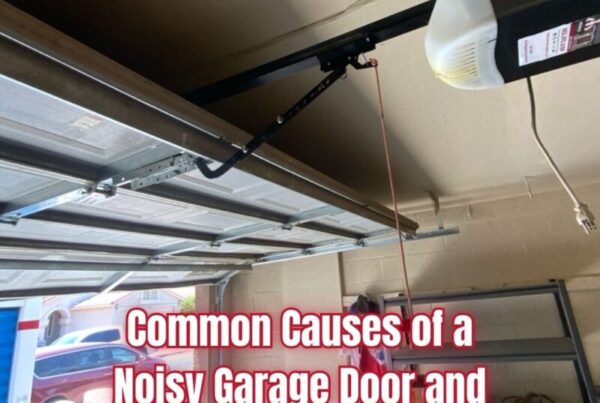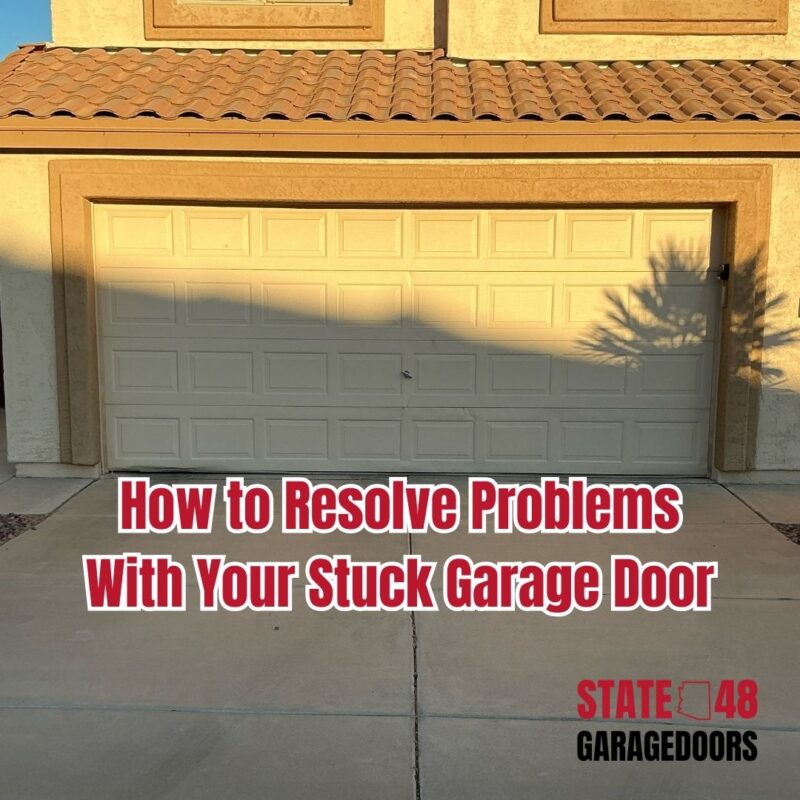
How to Troubleshoot a Garage Door That Won’t Open
Do you find yourself frustrated when your garage door refuses to open every time you need it? I once faced the same issue and learned that checking power connectivity, remote control functions, and safety sensors can simplify garage door troubleshooting. In this post, I explain how to test manual disconnects, inspect door tracks, and assess lift cables and springs. My goal is to help you resolve your garage door problems quickly and safely.
Confirm Power Source Connectivity for the Opener

I checked the circuit breaker or fuse box, tested the outlet, inspected the power cord, and reset the GFCI outlet, ensuring the garage door opener gets its power supply. This step-by-step process, similar to visits at home depot for reliable finds, helps avoid common issues that might risk your door, window, and even insurance claims.
Check the Circuit Breaker or Fuse Box
I started by inspecting my circuit breaker to make sure power was reaching the opener, making a note that even slight vibration in the engine area hints at potential issues, and weak connections might disrupt the warranty on installations suffering from rust on a hinge; I recalled similar times when a loose fuse caused prolonged downtime for my garage. Here is a list of steps I followed:
- Checked the main breaker for tripped switches
- Inspected individual fuses for defects
- Verified that there were no unusual vibrations in the engine area
- Ensured that all connections were secure and free of rust
Test the Outlet Supplying Power
I personally ensured the outlet supplying power was functioning properly by checking that the plug wasn’t loose and showing any signs of wear and tear from daily use, which is vital when your garage door replacement is around the corner. I also read a few tips on my favorite Facebook groups and used my trusty laser pointer to verify the connection wasn’t misaligned, preventing any potential hazard that might stop the door from opening.>
Inspect the Garage Door Opener Power Cord
I inspected the cord with my own eyes to make sure there was no damage that could lead to a pest nibbling at its insulation or a loose screw triggering erratic motion, and I always keep a small light handy to examine details up close:
- Look for wear or fraying
- Check if any screws are loose
- Verify the cord is firmly attached
- Monitor the motion sensor‘s performance
- If problems persist, consult a reputable overhead door company
I found that a quick, thorough visual check can save you from larger issues and keep your garage door running smoothly.
Reset the GFCI Outlet if Applicable
I reset my GFCI outlet because I needed to make sure that the electricity reaching my garage door opener was steady and uninterrupted, which is key in any garage door repair project; I also noticed that a slight noise near the wall sometimes indicates an underlying issue that could affect not just the door but even items like plumbing systems. Follow these steps to verify everything is in order:
- Unplug the device attached to the outlet
- Press the outlet’s reset button firmly
- Plug the device back in and test the opener
- Inspect surrounding areas for any signs of wear
Investigate Remote Control and Wall Button Problems
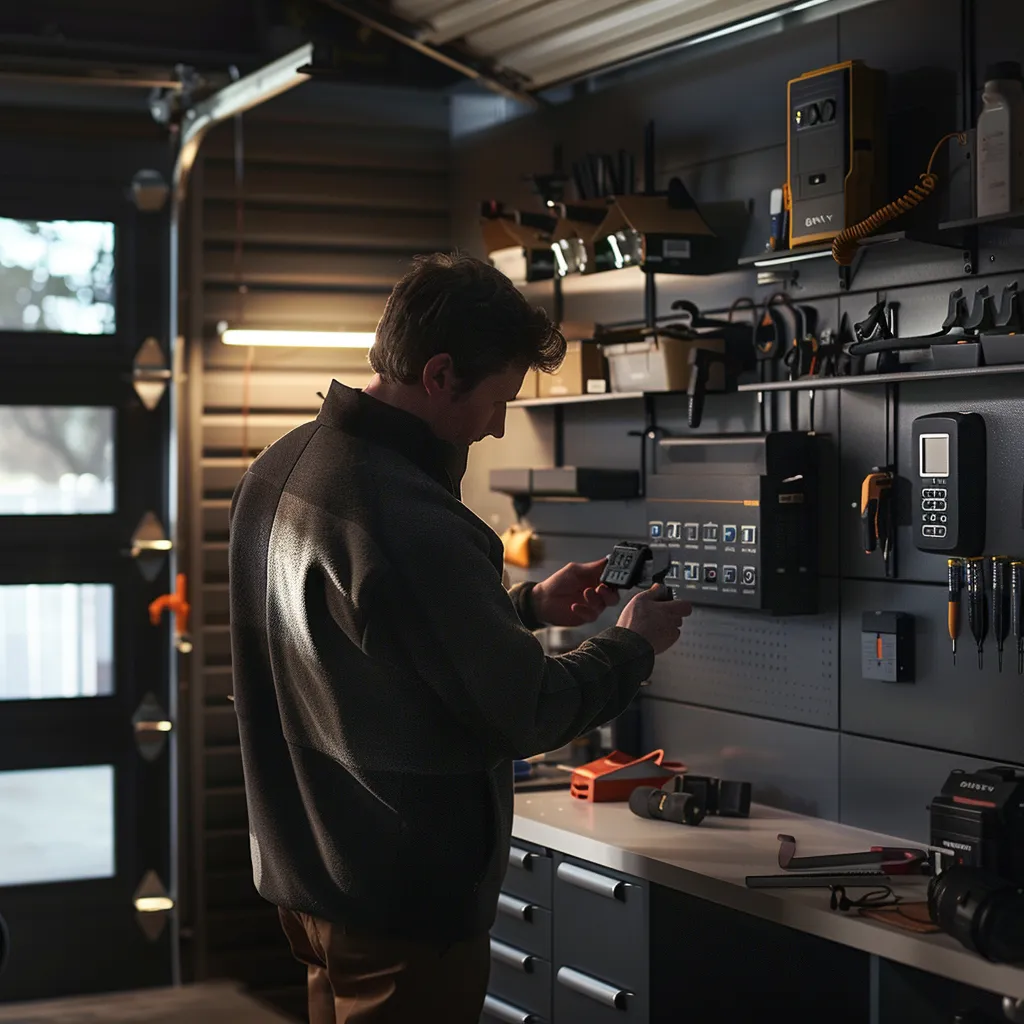
I checked my garage door installation and repair garage door steps, starting with the remote where battery issues can be the root of the problem. I later attempted reprogramming the remote, tested the wall-mounted control button near the circuit breaker, and reviewed the wiring. If needed, drop me an email for more details.
Replace Batteries in Your Garage Remote
After noticing my emergency garage door situation with a malfunction, I replaced the batteries in my remote using a simple process; I removed the back cover with a screwdriver and disposed of the old battery pack before inserting freshly charged ones, ensuring the metal contacts inside touched the battery terminals correctly. I found this step crucial, especially when my LiftMaster garage opener not working warning appeared, as even a loose connection or a small bit of debris resembling a stray piece of rope can cause the system to fail.
Attempt Reprogramming the Remote Control
I had a moment when reprogramming my remote was necessary after a brief power outage disrupted the setting, so I followed liftmaster gate opener troubleshooting steps; I re-synced my liftmaster with the devices and checked my keypad while keeping an eye on any interference from my car:
Test the Wall-Mounted Control Button
I checked my wall-mounted control button when my genie garage opener not working issues popped up, and I found that testing the switch without interference from nearby devices like twitter feeds on my phone helped pinpoint the problem. I realized that even if my chamberlain garage opener not working error was triggered by a faulty button, addressing it properly can save the day and prevent further complications with the garage door springs and overall door performance.
Examine Wiring for the Wall Button
I took some time to examine the wiring for the wall button and noted that even a slight misalignment of the wire or unexpected tension could hinder the door‘s operation. I conducted a close inspection, using a glass guide to better see any issues near the fuse connection, and found that proper alignment and ensuring there was no frayed wire significantly improved the response. My hands-on approach made it easier to troubleshoot and address the problem quickly.
Check Safety Sensors for Blockages or Misalignment
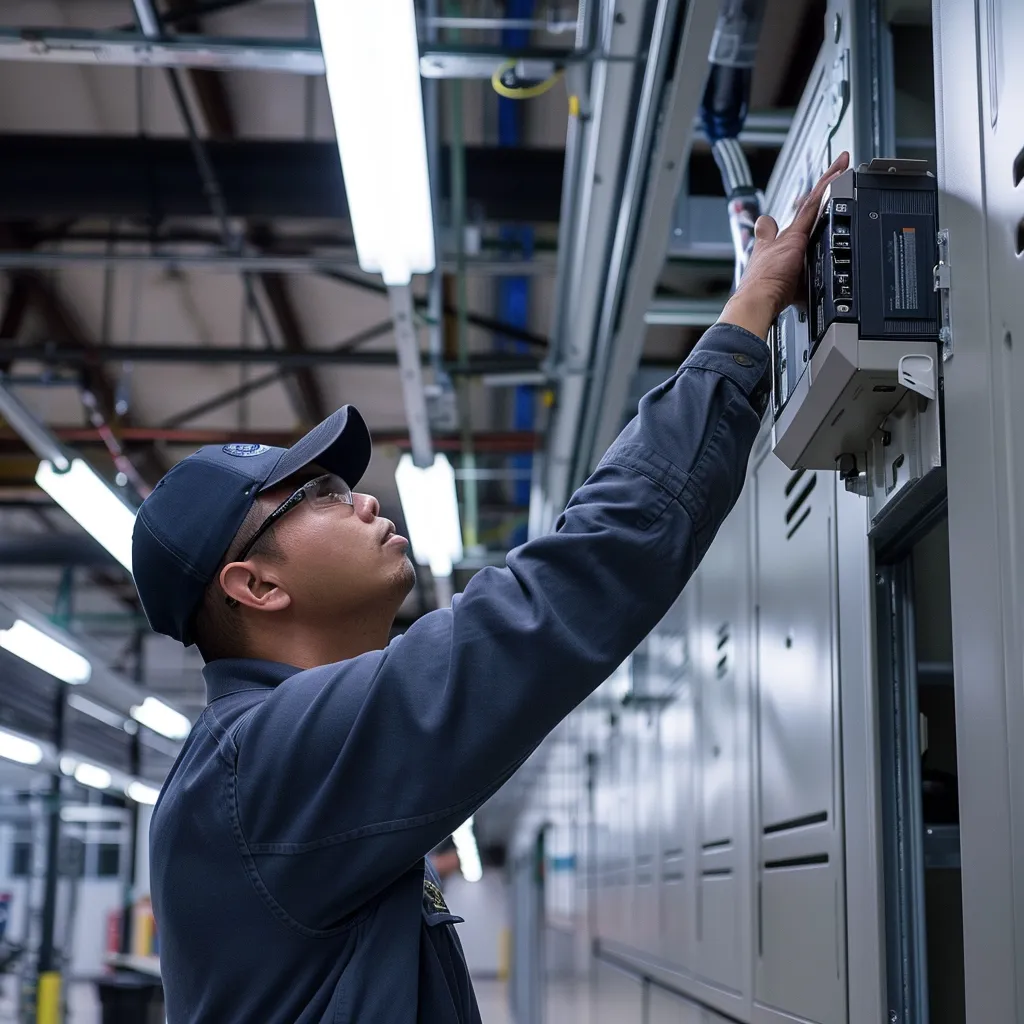
I checked the photo-eye sensor lenses, verified sensor alignment with indicator lights, removed obstructions, and inspected wiring. As part of my troubleshooting process, I paid attention to details like a well-tuned torsion spring, potential remote control glitches, and even liftmaster wall control not working issues. This practical check helps when liftmaster not working problems occur.
Clean the Photo-Eye Sensor Lenses
I took a few minutes to clean the photo-eye sensor lenses on my garage door opener as part of regular maintenance, using a soft cloth and a gentle cleaning tool to remove any dust or debris that might be affecting its performance. I noticed that even slight wear or excessive pressure on the sensor can lead to misalignment, so I made sure the lenses were spotless to allow smooth operation and prevent any safety issues. This simple step has saved me from unexpected malfunctions and kept my system running reliably every day.
Verify Sensor Alignment Using Indicator Lights
I checked the indicator lights and witnessed both signals staying steady, which meant my sensor alignment was spot-on. I used a bit of lubricant and grease on the nylon button mechanism to ensure everything stayed smooth—a tip I picked up from my own home improvement projects.
Remove Any Obstructions Blocking Sensor Beams
I cleared any obstructions that could block the sensor beams by checking for debris around the latch and ensuring the gear and limit switch were free from dust and buildup, which helped maintain the proper flow of electronics signals. I also inspected the nearby area to ensure no real estate items or loose objects hindered the sensor’s view, so the system runs smoothly and accurately detects all movements.
Inspect Sensor Wiring for Damage
I carefully inspected the sensor wiring for any signs of damage, noting that accumulation of dirt or exposure to harsh weather can cause issues with my garage door garage setup, often leading me to schedule swift garage door repairs. I observed that prolonged heat can accelerate wear, so I always make it a point to check these details to keep everything running smoothly.
Test the Manual Disconnect and Door Lock Status
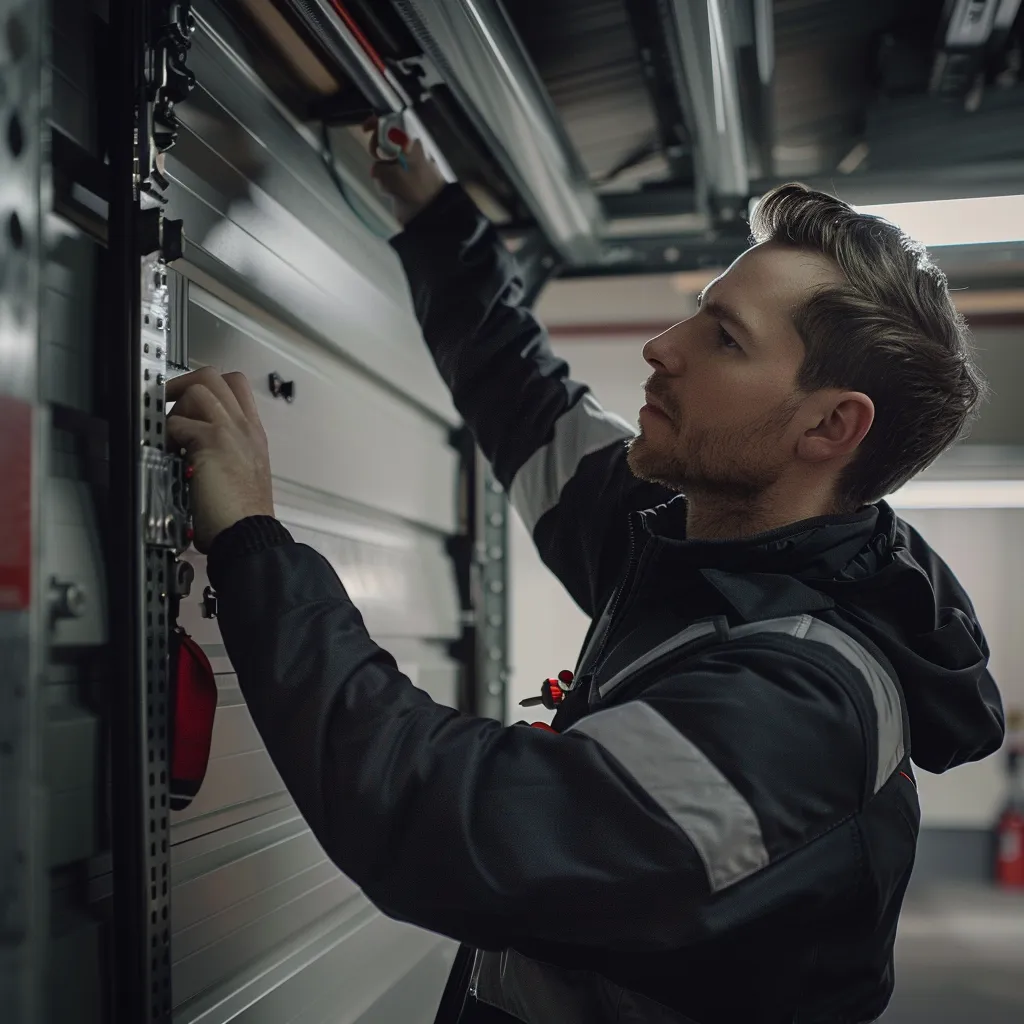
I checked the release cord and tried lifting the door by hand to see if any friction or sensor issues were at play, especially when the garage door wont open. I verified my lithium battery system and ensured manual locks were off, while quickly scanning for any jams. This approach, simple and internet-approved, helps me pinpoint problems efficiently.
Engage the Garage Door Opener Release Cord
I engaged the garage door opener release cord and noticed how a proper manual disconnect can make liftmaster troubleshooting much clearer, especially when issues with the antenna or pulley are suspected. I also observed that performing a chamberlain liftmaster professional 1 2 hp troubleshooting check often revealed problems like a misaligned cord that barely cleared the carpet, and addressing these simple matters saved me a lot of stress.
Attempt to Lift the Door Manually
I tried lifting the door manually after disconnecting the opener, which helped me pinpoint where the problem might be while also setting the stage for www geniecompany com troubleshooting in my overhead door troubleshooting. I noticed that any unusual resistance, whether coming from the concrete base of my basement setup or an issue with the lens alignment of the safety sensors, clearly indicated that I needed to dig deeper into the repair process.
Confirm Manual Locks Are Disengaged
I double-checked that all manual locks on my overhead door are off because it can cause real issues when the door fails to lift. I watched for any transmitter signals that might have been interrupted by debris on the floor or wiring misaligned by an electrician’s fault during past installations:
Identify Anything Physically Jamming the Door
I checked the area around the door for any items physically blocking its path, making sure that heavy objects or misplaced tools weren’t interfering with its movement; I also inspected the electrical wiring, assessed the door‘s weight distribution, and looked for remnants of silicone that might indicate previous patch repairs, especially after a truck recently passed by:
Inspect Garage Door Tracks Rollers and Alignment
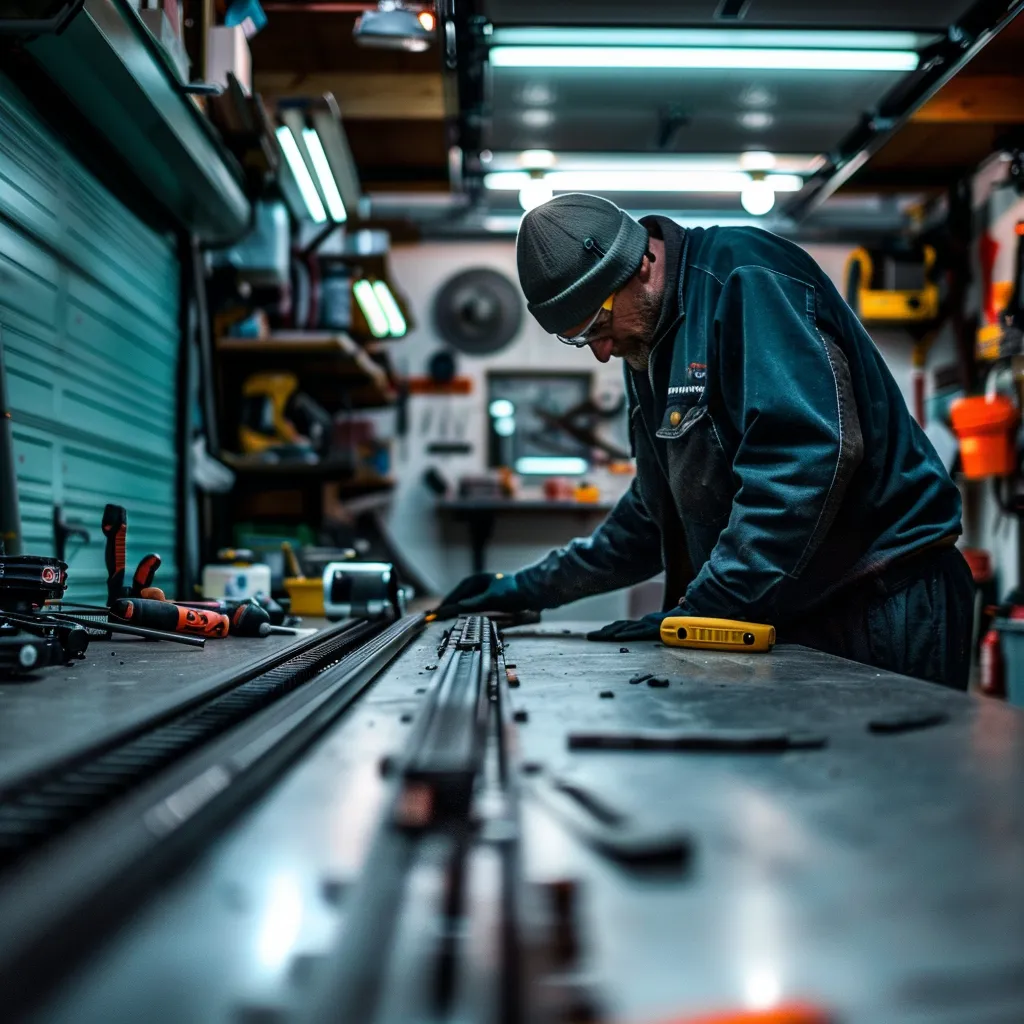
Inspect Tracks and Rollers for Damage and Debris
Before starting any repairs, I inspect the garage door tracks and rollers for debris along both the vertical and horizontal sections, making sure nothing clogs the system. In addition to this, I check for any signs of wood damage and test the switch to confirm everything functions properly. Once that’s done, I lubricate key surfaces, examine any bends in the tracks, and confirm that the rollers are still in good condition. These combined steps help me quickly pinpoint any underlying issues.
Clean Debris From the Vertical and Horizontal Tracks
Clearing out any clogging material from the tracks is a must when dealing with a stubborn garage door. This routine has saved me countless hassles and ensures smooth, reliable operation. To do this effectively, I follow a simple process:
-
Scan the entire track for debris or buildup
-
Use a brush to remove accumulated dust and dirt
-
Wipe down all surfaces with a damp cloth
Lubricate Rollers and Track Surfaces
Taking just a few minutes to lubricate the rollers and track surfaces with a silicone-based spray makes a noticeable difference. A well-oiled system moves more freely and avoids sticky spots that often prevent the door from operating smoothly. From experience, I’ve found that regular maintenance using the right lubricant not only minimizes mechanical wear but also speeds up the troubleshooting process. This proactive step consistently saves time and helps avoid complications when the garage door refuses to open.
Look for Bent or Damaged Tracks
While checking the garage door tracks for any problems, I paid close attention to signs of damage, noting that a bent or misaligned track can stop the door from opening properly:
Check for Worn or Broken Rollers
I checked the rollers closely for any signs of wear or breakage, and I quickly noticed when the movement became uneven; small defects often lead to significant troubles when your garage door refuses to open. Here’s a summary of my observations and actions taken:
Assess Torsion Springs and Lift Cables Condition
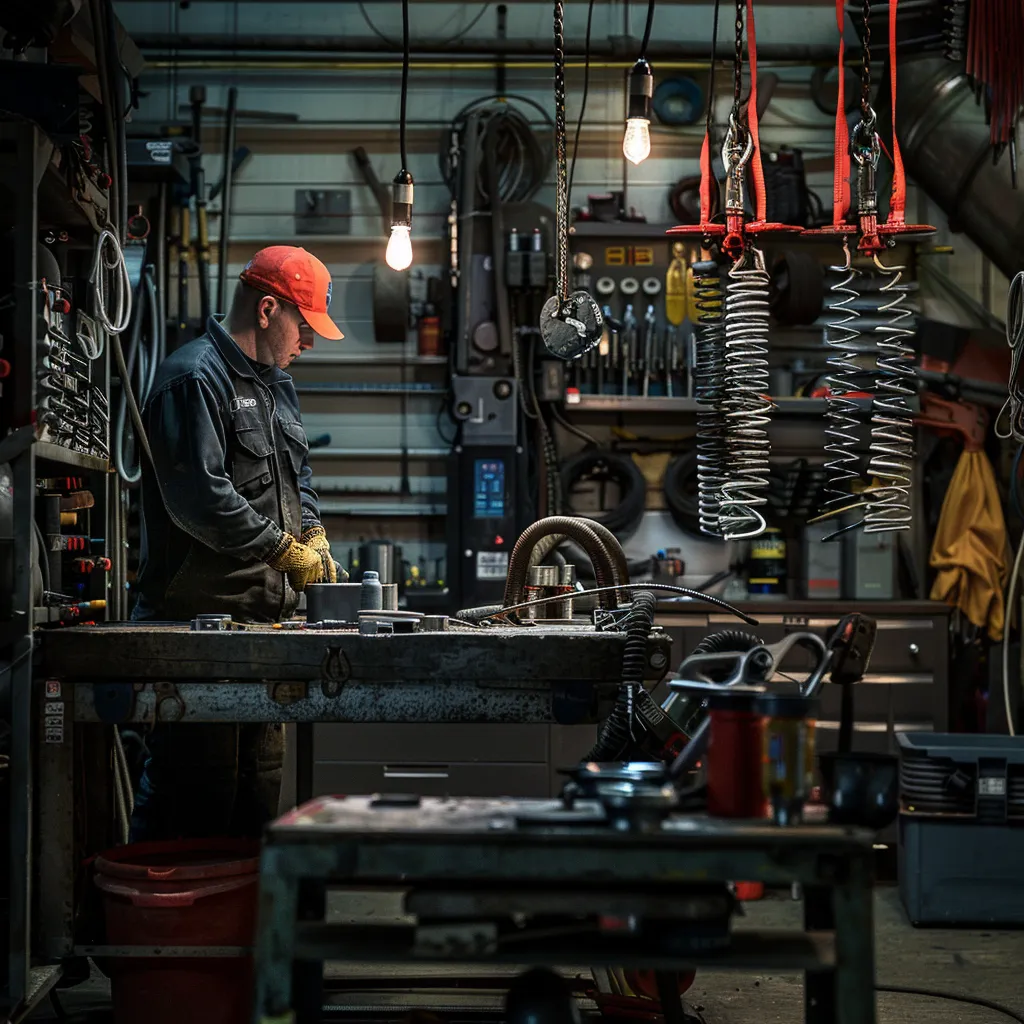
I checked my torsion springs for any clear breaks and used caution during the inspection while examining lift cables for fraying or slack. I also reviewed cable drum issues and noted signs that might point to a need for professional repair. This quick overview helps guide my detailed check on each component step by step.
Visually Inspect Torsion Springs for Breaks (Use Caution)
I decided to closely examine my torsion springs for any visible breaks because even minor damage can stop the system from working correctly. I followed a straightforward checklist to ensure safety and accuracy before calling a professional:
- Inspect the entire length for cracks or breaks
- Check for any signs of rust or wear
- Ensure the springs remain securely in place
Examine Lift Cables for Fraying or Slack
I inspected my lift cables closely to ensure there were no visible signs of fraying or excessive slack, as these issues often lead to the garage door failing to open correctly. I made a checklist of what to look for:
- Examine cable insulation for cuts or wear
- Check cable tension for excessive slack
- Ensure cables are securely fastened to the door mechanism
Identify Signs of Cable Drum Issues
I inspect the cable drum during my routine checks, looking for uneven rotation, visible wear, or looseness that might signal issues in the assembly. My approach involves pinpointing problems before they evolve into bigger repairs, making sure all components fit securely and operate smoothly:
- Examine the drum surface for cracks or excessive wear
- Confirm the drum rotates evenly with consistent tension
- Ensure the cable remains securely attached without slipping
Recognize When Spring or Cable Issues Require Professional Repair
When I encountered any significant wear or misalignment in the torsion springs and lift cables, I knew it was time to bring in a professional. My experience showed that dealing with these high-tension components without expert help can risk further damage, so getting a specialist to assess and repair the issue ensures a reliable and safe garage door operation.

